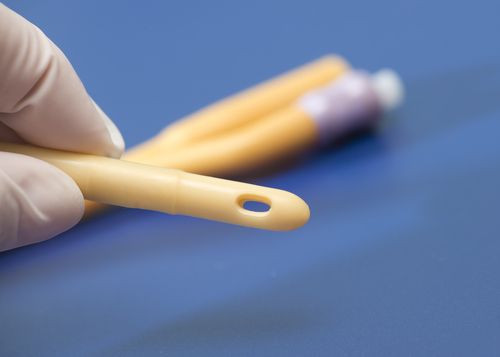Medical Devices May Soon Get New Coating Capable Of Preventing Blood Clots And Repelling Bacteria

Ground-breaking research by Harvard scientists reveals how life-threatening blood clots and bacterial infections around implanted devices, such as catheters and tubes, can be thwarted. They've developed a new surface coating for medical devices that not only prevents blood clotting but also stops notorious antibiotic-resistant bacteria from sticking to its surface. The study was reported in Nature Biotechnology.
Medical implantations like central venous access devices (CVAD), which are used to ease blood transfusions, and cardiac implants, are among the most frequently performed procedures. But introducing a foreign object into the body comes with its own set of complications. Blood clots can form pretty quickly, and bacteria adhere to the surface of the implants. Patients are often given blood thinning agents like heparin to prevent this, however, it could lead to excessive bleeding.
To address these issues, scientists developed a new surface coating from materials already approved by the FDA. After testing it on more than 20 different medical surfaces, from glass to metal, the scientists found that the new coating not only prevented blood clots but also suppressed biofilm formation, in which small populations of infectious bacteria attached themselves to the implants. The scientists also implanted tubes and catheters with the new coating into pigs' large blood vessels, and found that it prevented clotting for more than eight hours without the help of heparin.
The new repellent surface is called Tethered-Liquid Perfluorocarbon (TLP). It's made of a single layer of a Teflon-like substance (perfluorocarbon), which is then coated with a second layer of liquid perfluorocarbon — this form is already used in several procedures like eye surgery. TLP is a modified version of the revolutionary material SLIPS (Slippery Liquid- Infused Porous Surfaces), which was inspired by the slippery surface of the pitcher plant.
Other advantages of the new surface also emerged during testing. The scientists found that it TLP-treated devices could be stored for more than a year in a humid climate without compromising its effectiveness. The coated devices withstood the physiological stresses of excessive blood flow and pressure that implants are exposed to. Moreover, TLP-coated equipment also prevented the bacterium Pseudomonas aeruginosa from sticking onto it, even when the bacterium was allowed to grow on the equipment for more than six weeks. P. aeruginosa often causes deadly respiratory disease through exposure to devices like catheters. The coating not only prevented it from sticking to it, but also reduced blood infections.
"We were wonderfully surprised by how well the TLP coating worked, particularly in vivo without heparin," co-author Anna Waterhouse said in a statement. "Usually, the blood will start to clot within an hour in the extracorporeal circuit, so our experiments really demonstrate the clinical relevance of this new coating."
Exploring how the super-repellent coating works on medical equipment is just a start, the authors said. "Devising a way to prevent blood clotting without using anticoagulants is one of the holy grails in medicine” senior author Don Ingber said in the statement. The coating “could become a new paradigm for implantable medical devices, extracorporeal circuits, and more."
Source: Ingber D, Waterhouse A, Leslie D, et al. Bioinspired Blood Repellent Coating. Nature Biotechnology. 2014.
Published by Medicaldaily.com



























